
There is a new social network in town for all you pet lovers! Pet owners can create a custom page for the pets, make new pet friends, join groups, forums, and more! YouPet.com is growing fast among dog owners worldwide! The site offers a load of tips and information for cat and dog lovers and a very active message board of pet owners.
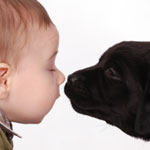
Dogs are basically social creatures and they belong to packs. Your dog belongs to your family, whom he considers a pack, and whom he has to follow. You must be in a position to communicate with him, understand and respect him and read his body language. It is important for you to prepare your family dog for the baby that will be arriving soon. Here are some tips to help make your pooch transition into being a family dog easier!
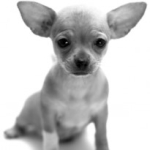
There is a wide range of miniature dog breeds for you to choose from, if you like very small dogs. Miniature or small dog breeds include the Miniature Pinscher, Pug, Toy Poodle, Chihuahua and Spaniel. There are many other small dog breeds available as well. There are many benefits to owning toy dog breeds, and here are a few.

If you’ve never seen a dog with serious food aggression issues, it’s difficult to appreciate the potential severity of the problem. Food aggression issues are not necessarily a reflection on the personality or training level of the dog: it’s an instinctive thing, and although dogs with a general aggression problem are naturally more prone to demonstrating food aggression, it’s also exhibited by otherwise-sweet, well-behaved, well-adjusted family dogs.
Jumping is a common problem among dogs. It’s rarely a problem for the dogs themselves – in fact, jumping seems to act as a reward in itself. It’s a different kettle of fish for the exasperated owner, who’s forced to deal with a new set of muddy footprints/gouges in their skin and clothes/offended guests/scared children!
To stop a dog from jumping, consistent training will be needed. Many owners inadvertently encourage jumping behavior from puppyhood: when a small puppy comes gamboling up to us, wiggling with excitement and making small, clumsy leaps at our knees, it’s almost natural to lean down and respond in kind.
Effectively, we reward that puppy’s “jump-y” greeting by reacting with exuberant affection, hugs and kisses. The puppy learns a fast lesson: jumping is a good thing, because it results in plenty of positive attention and physical contact.
Your dog doesn’t understand the difference between a jump as a small, cute puppy, and a jump as a huge, hairy adult. To a dog, a greeting is a greeting, and just because he’s aged by a few months is no reason to stop jumping – at least, not voluntarily.
You’ll need to take matters into your own hands, and make it perfectly clear to your dog that jumping is no longer an option.
When is your dog jumping not appropriate?
Many owners of smaller dogs actually expect them to jump up – among toy dog owners, jumping seems to be viewed as a sign of excitement and affection on the dog’s behalf. The good news is that these dogs aren’t likely to knock anyone flying when they’re feeling rambunctious, and they’re small enough that their size usually won’t intimidate any but the youngest of children.
On the other hand, there’s rarely a scenario where strangers will actively welcome being leapt up on by an unknown dog, regardless of said dog’s size; really, it’s just plain good form to teach your dog the “off” command, so that you’re prepared for those incidences when you’re not directly on hand to stop the jumping behavior.
For owners of large-breed dogs, the “off” (or “no jump”) command is mandatory. Big dogs are often taller than humans when they rear up on their hind legs (and just imagine the experience from a child’s point of view, with a dog’s slavering jaws looming above your own head!) – they’re often heavy enough to knock smaller adults tip over tail. At the very least, a large dog’s paws are heavy enough to gouge long rents in cloth and exposed flesh. Bruising and scratches are unpleasant enough to deal with when they’re your own problem; but they’re much worse when your dog’s inflicted them on somebody else!
Any kind of dog jumping that involves anyone apart from yourself is just bad form. All owners with even pretensions of responsibility should arm their dogs with a reliable recall to the “off” command – just in case.
Why do dogs jump?
The main reason that most dogs jump up is simply out of excitement.
Many dogs don’t jump at all, apart from when their owner returns home after a relatively prolonged absence (like the average workday). If your dog is leaping up on you in these circumstances, there’s no sinister motivation at work here: he’s literally jumping for joy.
A less common, but more serious, reason that some dogs will jump is to exert their dominance over you (or over whomever they’re jumping on). Dogs are pack animals: they live in designated hierarchies of social rank and order. When a dog needs to assert his dominance over a lesser animal, one way of doing so is to declare physical superiority, which is usually done by “jumping up”: he’ll sling one or both paws over the other dog’s shoulders.
You’ll be able to tell the basic reason for your dog’s jumping simply by considering the circumstances surrounding the event. If he only jumps up in periods of great excitement (like during play-time, or when you return home from work) then he’s clearly just demonstrating an exuberant frame of mind.
If the behavior occurs in a variety of situations, then it’s more likely that he’s expressing dominance over you, which is a more complex issue – the jumping’s just a symptom of an underlying attitude and communication issue. Essentially, you’ll need to make some serious adjustments to your overall relationship with your dog, and brush up on your alpha-dog techniques (tip: SitStayFetch has some fantastic resources on coping with a dominant dog – there’s a link to the site at the bottom of the page).
Four paws on the ground, please!
How you react to your dog’s jumping plays a big role in whether or not that behavior gets repeated. You’re going to need to make a prolonged effort to be consistent in how you choose to deal with this problem: for your dog to stop jumping, he needs to be taught that it is never ever acceptable for him to do so.
This means that you can’t allow him to jump sometimes, but forbid him from doing it at other times. Your dog can’t understand the difference between a playful and an irritable mood, or your work and play clothes: all he understands is that, if you allow him to jump up on some occasions, he’ll try to jump up on you whenever he feels like it, because he doesn’t know any better.
Stop your dog from jumping
Most trainers agree that the most effective way for you to weed out unwanted behaviors (like jumping) in your dog is also the easiest: all you have to do is simply ignore him whenever he jumps up. The idea is to give him the cold shoulder: withdraw all attention, even negative attention (so no yelling, shoving, or corrections).
Here’s how to implement this training technique: Whenever your dog jumps up on you, turn your back straight away. Since dogs understand body language a lot more clearly than they do the spoken word, you’re going to be using your posture to convey the message that such behavior isn’t acceptable here: fold your arms, turn your back, turn your face away from him and avert your eyes. ‘
This is where a lot of people make a mistake: they confuse ignoring the behavior with ignoring the dog. You’re not ignoring the behavior – i.e., you’re not carrying on with whatever you were doing as if the jumping wasn’t happening; you’re ignoring your dog. You’re still going to react; but your reaction is for you to actively ignore him.
The cold shoulder is a really effective way of communicating your displeasure to a dog – he’ll catch on very quickly. Without the encouragement of your attention and your reactions to his behavior, he’ll calm down very quickly indeed.
When to praise
When all four paws are on the ground, then – and only then – you can praise the heck out of him!
Don’t be confused by the proximity of the positive reinforcement to the negative – dogs have a very short “training memory”, and are only capable of associating a reaction from you with whatever behavior it is they’re exhibiting at the time of that reaction.
So, it’s perfectly OK for you to react with wild enthusiasm the very second that his paws touch the ground, even if you were cold-shouldering him the split-second before.
Recommended Reading
For more information on understanding and solving canine behavioral problems, you’d probably be interested in checking out SitStayFetch. It’s a complete how-to manual for dog owners, and is packed with just about all the information you’ll ever need on dog psychology, canine communication how-to’s, practical advice for dealing with problem behaviors, and detailed step-by-step guides to obedience training.
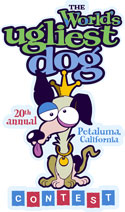 [/caption]
[/caption]
The 2008 ugliest dog contest is gearing up for it’s 2008 ugly dog competition!
Do you have a dog or know a dog that is so ugly he is cute? If so, enter the ugliest dog contest for your chance to win $1000, trophy and bragging rights!
Download the entry form . Ugly Dog Contestants are invited to have their ugly dog featured on the ugly dog contest website as part of the pre-fair online World’s Ugliest Dog Voting Gallery. To get your dogs ugly mug added online for the world to see completing your entry form and send a digital photo with a short description of your dog to marketing@sonoma-marinfair.org.
The contestants can be viewed here. Photos and descriptions will be posted starting this March.

The 2007 Ugliest Dog Was Elwood (shown to the right) and I must agree he is a pretty ugly dog! Do you think your dog can beat Elwood?
If so, get your entry in to take your shot at the Ugliest Dog Contest!
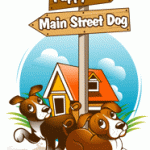
2 Hound Designs annual dog collar sale is going on to help raise money and awareness for canine cancer research through Hope for Hounds. Every year 2 Hounds Design releases limited-issue, custom-designed collars with a goal to raise both money and awareness in the fight against canine cancer. View products
Hope for Hounds is a nonprofit organization founded by Janet Schaffer in 2005. Janet started Hope for Hounds after one of her favorite hounds died of osteosarcoma, the most common cancer found in large-breed dogs including Greyhounds and Great Danes. All of the proceeds go to fund Dr. Guillermo Couto’s canine oncology research at Ohio State University in Columbus, Ohio.
From now until March 31, 2008, 2 Hounds Design will double their donation to $10 for each collar sold, $6 for each leash, $5 per headband, and $3 for each key fob sold. View press release
According to Animal Disease Diagnostic Laboratory at Purdue University, “Approximately 80-85% of all canine skeletal tumors are diagnosed as osteosarcomas (OSA). Canine OSA occurs most often in dogs 7-9 years of age. Large breed dogs are at 150 times greater risk of OSA. Highly aggressive, over 90% of all clinically significant OSAs have already micrometastasized by the time of diagnosis.”
You can do your part to help fight and research cancer in dogs by visiting Hope For Hound Collars 2011! All dogs need collars, so why not support a good cause!
[caption id="attachment_1273" align="aligncenter" width="300" caption="2 Hound Designs dog collars"]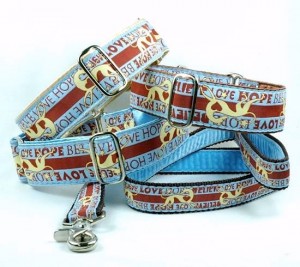 [/caption]
[/caption]
PETCO stores announced the launch of a new holistic dog food by Halo Purely for Pets®, which company is co-owned by talk show host Ellen DeGeneres. PETCO will be adding this holistic dog food and cat food line to their stores nationwide this week.
PETCO is supporting the new products’ launch by offering 20% off to its P.A.L.S. members on purchases of all Halo products made from March 2 to March 23.

Halo expanded its signature recipe canned dog food with the introduction of lamb, beef and salmon varieties. The company also introduced new Halo dry food selections for dogs: Spot’s Stew formulas for adult dogs and puppies.
The Halo dog food is made from all-natural ingredients such as butcher quality chicken, eggs, carrots, flaxseed, green peas, barley, sweet potatoes and cranberries. All the recipes have been fortified with vitamins, minerals, prebiotics and probiotics and do not include byproducts, chemical preservatives, fillers, rendered meats, artificial colors or flavors.
For everyone looking for an all natural dog food this holistic dog food seems like a great answer!
For additional information on the holistic dog foods visit the PETCO website or PR WEB.
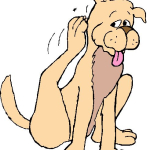
Keep home and dog free of fleas Fleas feed on animal blood and can cause problems in a dog or puppy including skin irritation, allergic reactions, anemia, tapeworms and in some cases, death. So it is important to keep your home flea free and dog free of fleas. There are many different ways fleas can be treated, however fleas can some times be hard to get rid of with one treatment. There are flea dips, flea collars, flea shampoos, flea sprays and monthly medications applied to a dogs neck to kill fleas
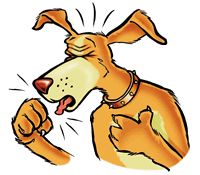 [/caption]
[/caption]
Kennel cough or canine infectious tracheobronchitis is a disease that affects a dogs trachea lining. It is an upper respiratory issue in dogs caused by an airborne virus or bacteria. Kennel cough is highly contagious in dogs. Kennel cough is a common infectious diseases among dogs who have been in a kennel or around a large amount of dogs.
When a dog has contracted kennel cough they normally have a deep cough that sounds like something is stuck in the throat. Others describe it has a dry hacking cough. Some dogs begin to cough up mucus and others may vomit mucus. If you notice mucus that is green/brown, your dog should be seen by a vet.
Cough suppressants are generally recommended by Vets to help lessen cough symptoms and some vets may recommend an antibiotic to prevent any other infections from developing.
The virus that causes kennel cough can turn kennel cough into pneumonia, so be sure to keep a good eye on a dog that is suspected to have kennel cough. Several causes of kennel cough can cause death.
A Kennel Cough Vaccine can be given to a puppy or adult dog before boarding or before any large dog event to help prevent kennel cough. However, to prevent kennel cough it is a good idea to keep your puppy away from other dogs as much as possible. If your dog is an adult and in contact with stray dogs, being kenneled, or staying in the hospital over night, it is a good idea to administer a kennel cough vaccine.
Photo source:allaboutdoghealth.blogspot.com
Do you ever get tired of going outside every hour with your dog? We live on 15 acres, with our entire back-yard fenced in. Many days our dogs just want to run in and out of the house like kids. It seems like when I sit down, the next dog is ready to go out. I knew there had to be a way to make it easier for my dog to get in and out of our home.
Installing a dog door is one way to allow free access to outdoors, but what about the critters that can also get in and out of that doggy door? We live in the middle of the boon-docks, and all kinds of creatures and reptiles seem to make their ways into our homes!
 The Staywell Infra-Red Dog Door
The Staywell Infra-Red Dog Door is the perfect answer! After much research, we decided to go ahead and order a Staywell® infra-red dog door.This intelligent doggy door is a device set up inside you door that your dog can pass in and out of at will. It comes with an electronic device that knows when your dog is approaching and unlocks for them. The mechanism is placed on the dogs collar and can sense when it is approaching. Most Infrared dog doors come with a 1-3 year warranty and can be easily installed.
The manual locking system comes with 4 ways to lock it:
Now, they are kinda pricey. They range from $150-$300 depending on the manufacture of the infrared door.So why should you purchase this nifty doggy device? Simple…the infra-red dog door is set-up to only open with the key so you are ensured that no surprises will be in your home. Protecting your home is a important part of life and the infrared dog door will keep all unwanted menaces out of your home and allow your dog free access to outdoors.
This dog door can fit in windows, walls, or doors and gives you more control over your dog’s movements allowing you to install them though out the house. If company is coming you can put up and deny them access while you visit or simply let them in and out to use the restroom. This device truly will help you and your dog; giving them more freedom and you more space.
Check out the Staywell Infra-Red Dog Door, it has great ratings and is one of the most popular dog doors around!